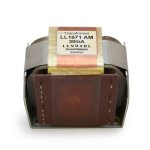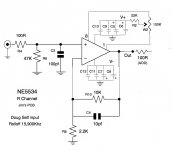Lundahl LL1671 Transformer 1:2 Step Up.
Are there any disadvantage to use the Lundahl IT LL1671 in 1: 2 configuration over 1: 1 configuration ?
Maybe some less bandwidth ?
http://www.lundahl.se/wp-content/uploads/datasheets/1671.pdf
Are there any disadvantage to use the Lundahl IT LL1671 in 1: 2 configuration over 1: 1 configuration ?
Maybe some less bandwidth ?
http://www.lundahl.se/wp-content/uploads/datasheets/1671.pdf
Attachments
If the transformer is built to a high standard (and that one is) I don't see much in the way of bandwidth losses,its down to transformer design .
When the era of MC cartridges arrived ( after being criticized in the MM era ) most step up devices were transformers I remember they even had inline RCA types ,I used to own some and nobody complained then of lack of bandwidth---in the HIGH quality ones.
Interstage tube step up transformers were in the earliest radios so its old school design technology.
When the era of MC cartridges arrived ( after being criticized in the MM era ) most step up devices were transformers I remember they even had inline RCA types ,I used to own some and nobody complained then of lack of bandwidth---in the HIGH quality ones.
Interstage tube step up transformers were in the earliest radios so its old school design technology.
Maybe some less bandwidth ?
This is reflected in the datasheet. Also, as the two primaries are now in parallel the primary inductance is one quarter, so only a low impedance source will work well.
Neither, you would want three 46s triode strapped running in parallel to drive the 1671 successfully.
300B, with compromise. 🙂Which tube would be better in this case ?
10H as primary inductance is too low for anything, which have greater output impedance than ca. 600R.
I use 46 into 300b. This needs added gain and my solution has been to use a pair of NE5534 op-amps in front of the 46 giving me 5.5x gain. It's a very clean and transparent sound, and no coupling cap needed. It's a different kind of solution, but it works very well for me and I like the sound. I can post the op-amp circuit if anybody is interested. I got a really good PCB from Jim's Radio in Hong Kong.
Here's what I think the circuit is, anyway it's pretty close. The NP plate choke has 180H inductance and gapped for 40mA. It's pretty big and amorphous core. Not sure what the 300b operating point is, but there's plenty of info on 300b outputs. I'm using a LL1682 OPT. PCB for the op-amps has room for several decoupling caps, but I only fitted 2. I also didn't fit the correction circuit shown.
Attachments
Last edited:
This 46 (LC) amplifier can be used as a pre-stage, but it does not have enough swing to drive the 300B. The 46 needs to work at a higher voltage.Here's what I think the circuit is, anyway it's pretty close. The NP plate choke has 180H inductance and gapped for 40mA. It's pretty big and amorphous core. Not sure what the 300b operating point is, but there's plenty of info on 300b outputs. I'm using a LL1682 OPT. PCB for the op-amps has room for several decoupling caps, but I only fitted 2. I also didn't fit the correction circuit shown.
Yes - it could be configured to operate at a higher voltage. The 10Y is an alternative. Or even a 2P29L. I've used all three to drive a 2a3 and they sound great. I use a 1:3 step-up input transformer at the moment with a 2P29L.This 46 (LC) amplifier can be used as a pre-stage, but it does not have enough swing to drive the 300B. The 46 needs to work at a higher voltage.
Thanks for the reply! Learn from you!Yes - it could be configured to operate at a higher voltage. The 10Y is an alternative. Or even a 2P29L. I've used all three to drive a 2a3 and they sound great. I use a 1:3 step-up input transformer at the moment with a 2P29L.
- Home
- Amplifiers
- Tubes / Valves
- Lundahl LL1671 Transformer 1:2 Step Up.


